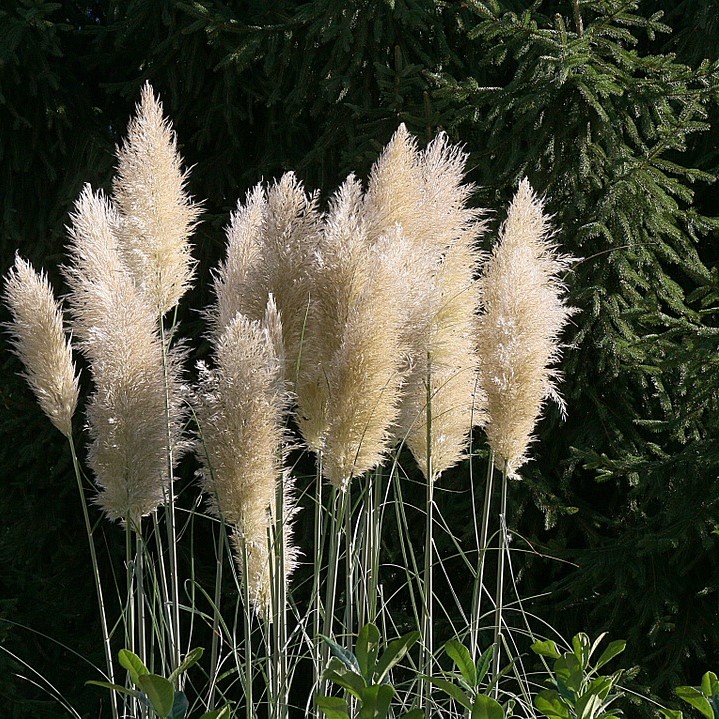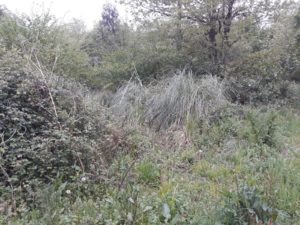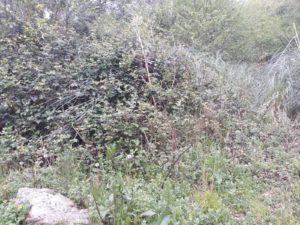DUMPERS YES,…MEANWHILE
Sunday May 5th, 2019


Dumpers yes, … meanwhile.
I have lived more than half a century, memory transports me to children’s games in search of flower dusters to use as improvised spears with which to repel the advance of the enemy. Then, this grass relegated to dumps or dumps, was not considered a threat, except for the cuts in the skin produced by the ignorance of its sawed leaves, and was an opportunity for the development of our fantasy. It was the first 60 years and the industrial and productive activity in general was anecdotal compared to that achieved in the last two decades.
They have been the deep territorial transformations like the opening of new infrastructures of transport, the put in use of new lands for industrial polygons – not always exploded and abandoned often during many years-, the proliferation of uncontrolled dumps or the abandonment of agricultural exploitations, among other factors, among which should be included the null further treatment of these lands and the frequency with which they burn -as an easy but ineffective means of elimination- those that have favored the propagation of this herb that, contrary to what is said , does not invade the lands of mature forests, forests in formation or other semi-natural if it is not with the help of man, that clarifies, removes, deposits its debris, or causes fires.
This affirmation, which I suppose will outrage the great majority, is not gratuitous and results from the observation of some spaces that have remained unaltered by man for years and the verification that the authorities in Botany do not clearly define the situation.
In this regard, being nothing more than a mere fan of the subject, I know of no study, and this does not mean that there is no-if there is, please indicate publicly, where the harmfulness of this herb is clearly stated, being the most common indicate a probable damage on the natural spaces, a slowing down of the evolution towards pre-forestry phases or the reduction of the aesthetic values of the natural areas. 
As for the first thing, I will add that not only the duster does not advance in those spaces, but that those that have managed to prosper due to the factors mentioned above, end up, after a prolonged abandonment to the only natural effects, drowned by the potential vegetation – brambles, escajos, bushes or trees- that prevents them from receiving the light necessary for their growth.
From my experience I deduce that there seems to be no harm to ecosystems, especially when the use that is sought on most of the land occupied by the plumerales is not precisely that of natural forest areas, being the most common destination, that of landscaped areas marginal in the case of infrastructure or future urban development. On the contrary and due to the sharpness of the margins of their leaves, they are annoying for human transit, which facilitates the shelter for the fauna: this way we have been able to see inside the leaves the green lizards or nest the hedgehogs ; It can also be observed in the flowering months as certain species of birds perch on the tufts to eat their seeds.
It is necessary to value for the eradications that are intended to be made, the economic and especially the natural damages – since nature matters so much to us-; to the foregoing I would add the energy costs derived from the use of manual or heavy machinery, both for the eradication and for the subsequent maintenance of these lands as landscaped spaces, or the undesirable effects on the environment of the herbicides that are used.
I think it would be more opportune to dedicate the public resources that are used today to get to know this plant better: does it cause a loss of biodiversity or does it contribute to the conservation of fauna? If we respect the colonized lands, do they remain in that state or do they evolve allowing the growth of other species? And for this, how long would it be necessary? What and how many faunistic species does it shelter inside? …
Words like invasive, foreign, allochthonous applied to plant or animal species, may not always indicate something negative. I believe that with feather dusters we are facing a natural reaction to the abandonment of land after human interventions that, with great efficiency and free of charge, revegetate the abandoned areas contributing to enrich their soil preparing it for the growth of other plant species and provide shelter and food to an indeterminate number of animals in the vicinity of human activities.
Therefore, I request from the public authorities a moratorium in the eradication campaigns of this species, waiting for the results of the field studies that clarify the questions raised here and others that without doubt may be raised by qualified researchers. 
Source:
Andrés Cabezas Ruiz
Bibliography.
Herrera Gallastegui, M. and Campos Prieto, J.A. (2006). “The reed of La Pampa, (Cortaderia selloana) in Bizcaia, a practical guide for its control”. ZTF-FCT, UPV, BFA-DFB.
Bertacchi, B .; Lombardi, T. and Onnis, A. (2001). “Robinia pseudoacacia in the forested agricultural landscape of the Pisan hills (Italy)”. De Plant invasions: Species Ecology and Ecosystem Managemen. pp. 41-46.





Leave a Comment